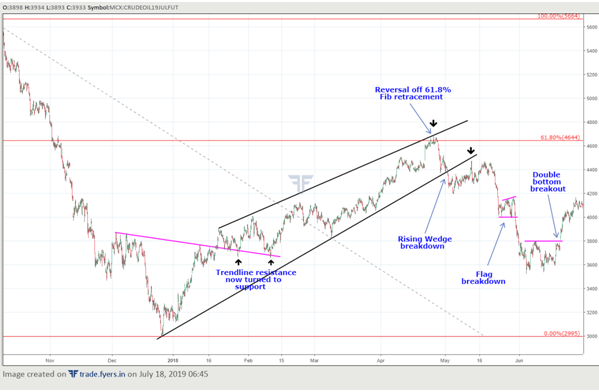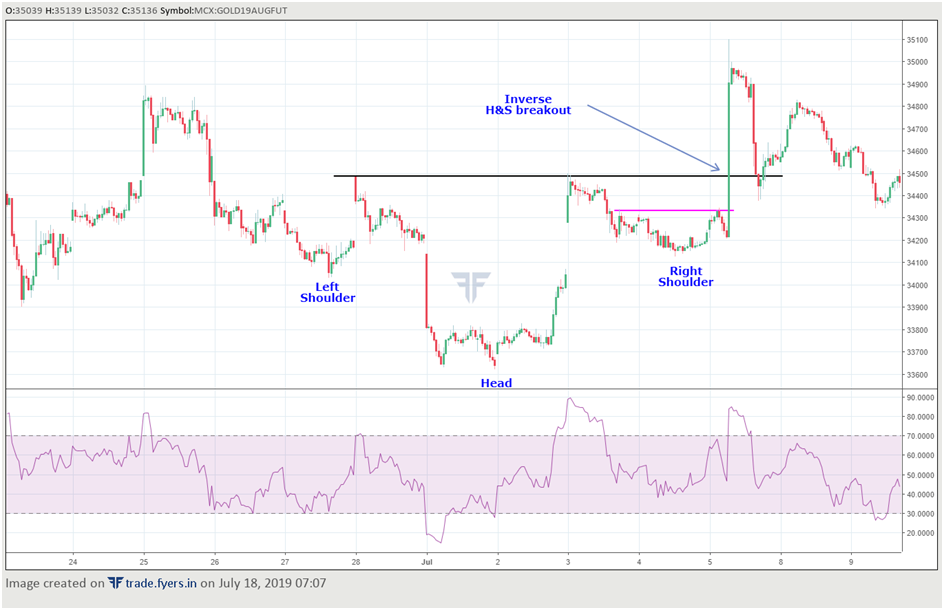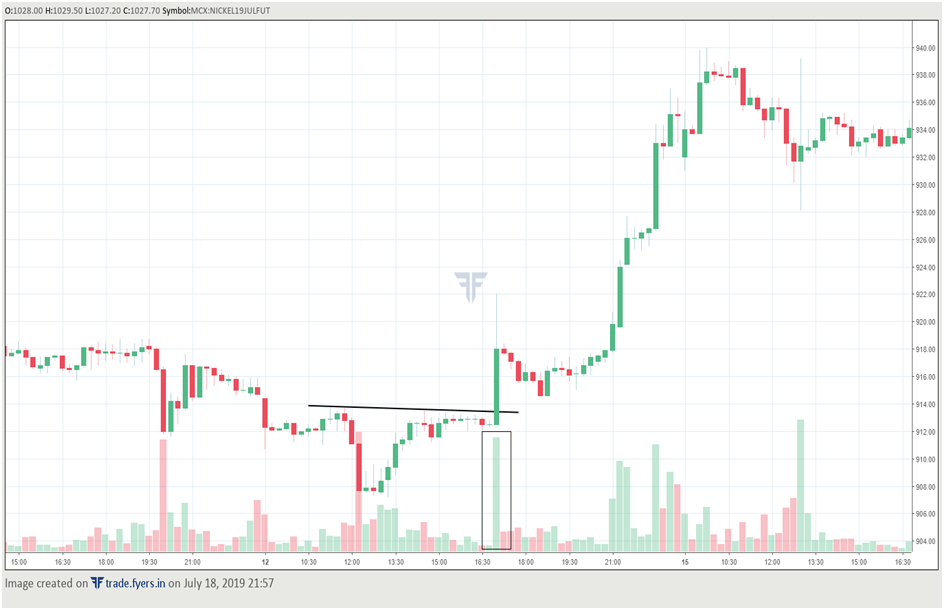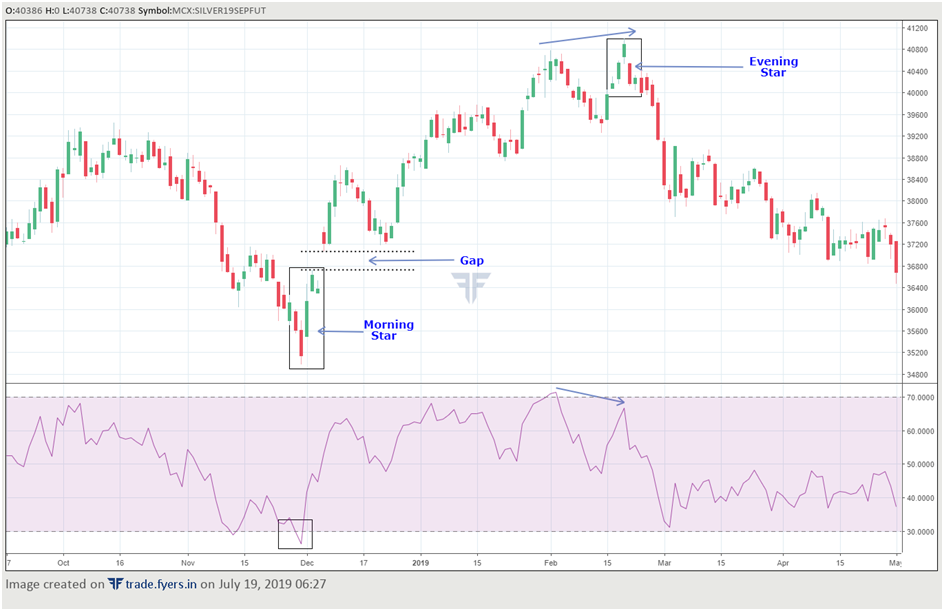
So far, we have discussed a lot about the fundamentals of major commodities. These included the two precious metals (gold and silver), the two energy commodities (crude oil and natural gas), and the six base metals (copper, aluminium, zinc, lead, nickel, and brass). That said, each of these commodities were explained purely from the viewpoint of international prices (denominated in USD). Even the chapter on Technical & Intermarket Analysis focused on international commodities. The reason why we laid such a heavy emphasis on international commodities is because commodities that are traded on the MCX are nothing but derivatives of international commodities. In other words, prices of MCX commodities that we have discussed so far are derived by multiplying the prices of the respective international commodities with the USD/INR exchange rate. Hence, it is imperative to have a strong understanding of the factors that influence commodities priced in dollar terms.
The objective of this chapter is to focus on commodities priced in INR. As we have already covered the fundamental aspects, we will not be covering the same again. Instead, we will focus solely on the technical charts of key MCX commodities. So, let us get started.
The above chart is the hourly chart of MCX crude oil. The focus of this chart is on trendlines and price patterns in order to identify changes in the direction of the trend. Also included is fibonacci retracement, which is an invaluable tool to identify key supports and resistances. In this case, price reversed exactly from the golden ratio, i.e. the 61.8% retracement.
The above chart is the half hourly chart of MCX gold. Notice here that price formed an inverse H&S pattern. Also observe that within the right shoulder, there is another small inverse H&S pattern (neckline marked in pink). The price objective of this smaller pattern exceeded the neckline of the larger inverse H&S pattern. One can use such a setup to build positions early, as this would facilitate a better risk-reward ratio.
The above chart is the 15-minute chart of MCX Nickel. Observe the occurrence of a large bullish candle with a strong uptick in volume. Also notice that the low of this candle is at or very near the open. This suggests that bulls gained an upper hand over the sellersfollowing some sideways movement over the last few candles. One can use the occurrence of such a candle (especially if accompanied with volume) to build a long position, by placing stop loss a few ticks below the low of this bullish candle.
The above chart is the daily chart of MCX silver. The focus here is on trading using candlestick patterns and RSI signals. Notice the formation of a morning star pattern that occurred at a time when the RSI had entered oversold region. One could initiate a long position post the completion of this pattern. Observe that in the following days, a gap was formed. The occurrence of this gap and failure to fill it further strengthens the bullishness of the underlying. The rally continued for the next few weeks, until an evening star pattern emerged. The occurrence of this pattern along with a bearish divergence between price and RSI at overbought levels suggested it was time to exit long positions and possibly build short positions.
A few things to remember
-
The prices of commodities on the MCX are derived from the prices of the respective commodities priced in US dollars. As such, always monitor the trends and fundamentals of international commodities.
-
Also keep a track of USD/INR exchange rate as it tends to influence the prices of commodities that are traded on the MCX, especially those of non-agricultural commodities.
-
As the MCX closes at 11:30 PM IST (or 11:55 PM IST, in case of day light shift) and opens the following session at 9:00 AM IST, quite often, there will be a gap between the closing price of one session and the opening price of the following session. This is because international commodities continue to trade during the time when the MCX is closed at night. One needs to be wary of this and avoid building large overnight positions, especially during times of heightened volatility.
MCX commodities and their international benchmarks
Earlier in the chapter, we talked about the need to always monitor the trends and fundamentals of international commodities. Below mentioned is the list of MCX commodities and their respective international benchmarks.
| MCX Commodity | Corresponding International Benchmark |
| Gold | COMEX Gold |
| Silver | COMEX Silver |
| Crude oil | NYMEX Crude oil |
| Natural Gas | NYMEX Natural Gas |
| Copper | LME Copper |
| Zinc | LME Zinc |
| Aluminium | LME Aluminium |
| Lead | LME Lead |
| Nickel | LME Nickel |
Next Chapter
Comments & Discussions in
FYERS Community




Faizal commented on July 24th, 2019 at 8:11 PM
Hi,
Really explained good. But does this work only on Hourly and Half hourly or we can change the time frame to 1 and 5 minutes?
Madhu K commented on July 24th, 2019 at 8:49 PM
How Reliable is inverse H&S pattern?
Zaheer commented on July 24th, 2019 at 8:58 PM
What is RSI time period mentioned for Silver?
Vignesh commented on July 24th, 2019 at 9:02 PM
Which is the best between Fibbonacci and Pivot points? Which would give the better understanding among the both?
tejas commented on August 14th, 2019 at 3:45 PM
Fibb retracements are used for longer-term price correction levels. Pivot points are most useful for intraday and short-term traders.
Sangam commented on July 24th, 2019 at 9:18 PM
As mentioned above Golden ratio level is calculated on the basis of Fibbonacci retracement. How they are interlinked with each other.
tejas commented on August 14th, 2019 at 3:49 PM
Ah, I guess you misunderstood. Golden ratio in the Fibonacci series is 61.8% and it is considered to be the most important level when measuring retracements.
Deepti Jain commented on July 24th, 2019 at 9:21 PM
Can we use Fibbonacco Arcs and Fibbonacci Fans for trading in Crude Oil?
tejas commented on August 14th, 2019 at 3:50 PM
Yeah, but I must say that it is not very widely used as Fibonacci retracements. Personally, I have never used them.
Mohammad Azmi commented on July 24th, 2019 at 10:31 PM
I usually use the trend lines along with moving average indicators for Equitys. For MCX trend lines are enough or we have to use it with some indicators.
tejas commented on August 14th, 2019 at 3:52 PM
It depends on what you're trying to achieve. If you're trying to find momentum, then moving average and moving average based indicators are useful. In which case, RSI, stochastics and MACD are useful alongside MA crossovers.
Balabai yadnaik commented on July 29th, 2019 at 6:31 PM
Which indicator is better for crude oilmini..??
tejas commented on August 14th, 2019 at 3:53 PM
Considering how volatile oil is and how fast it moves, you should consider momentum indicators along with MA crossovers. This will give you an idea of the momentum and it's direction.
l.nanda kumar commented on August 1st, 2019 at 5:15 AM
sir i am finding it difficult to ope trading account pls send me details.
tejas commented on August 14th, 2019 at 3:53 PM
Hi Just click the Open An Account button on the website and you can open your account online without any hassles. If you are not able to do it, our team will get in touch with you within 24 working hours.
tejas commented on August 14th, 2019 at 3:13 PM
Faisal, I have explained it using daily charts. Chart patterns on a longer timeframe chart are of greater significance than shorter timeframe in my opinion. Hence, if you are identifying patterns in intraday charts, although they may give you clues, they are not nearly as important as the daily or weekly charts.
tejas commented on August 14th, 2019 at 3:43 PM
It depends on the chart. I cannot say how reliable a particular chart pattern is without looking at it in the context of its price action.
shiv thakur commented on July 6th, 2020 at 3:08 PM
i Want learn mcx technical
Abhishek Chinchalkar commented on July 7th, 2020 at 11:58 AM
Hi Shiv, if you are interested in learning Technicals, we highly recommend you to go through each chapter in our Technical Analysis module.